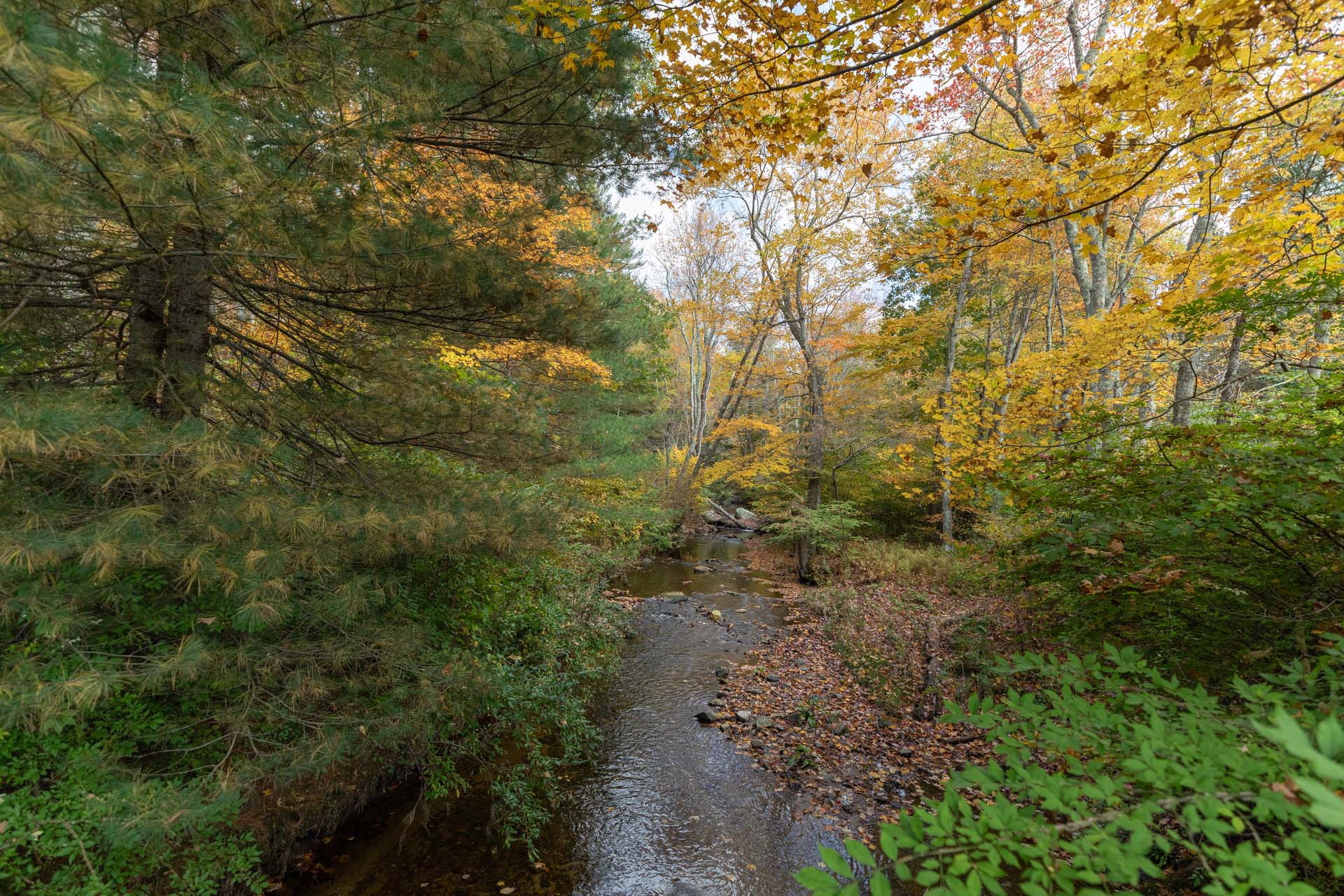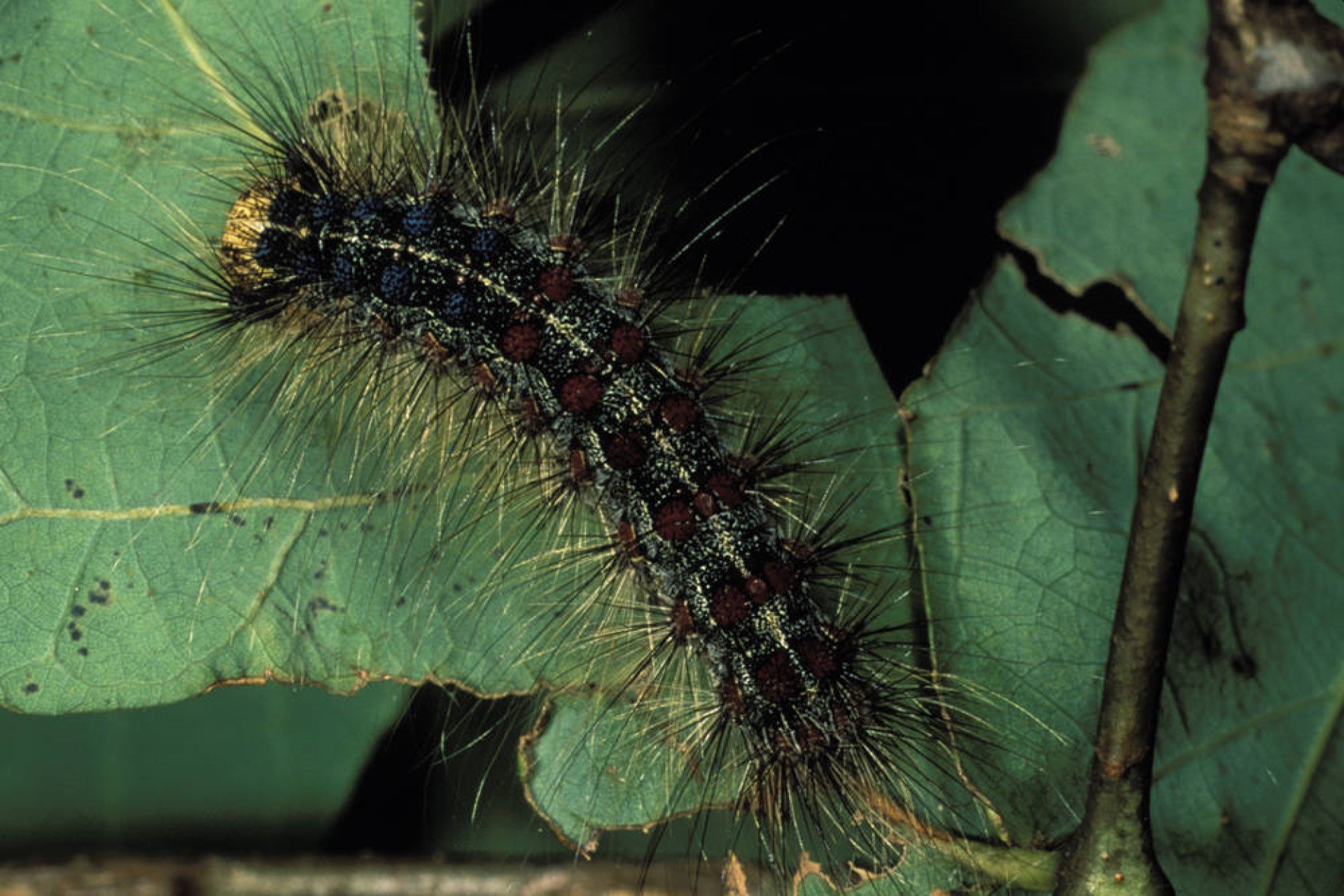As you walk along the trails of Laughing Brook Wildlife Sanctuary, you will encounter hundreds of dead trees. Unfortunately, these trees were impacted by a Spongy Moth caterpillar outbreak that lasted from 2015 until 2017. The voracious caterpillars defoliated hundreds of thousands of acres of forest in eastern Connecticut and central Massachusetts, before natural enemies of the caterpillars ended this latest outbreak. The trees then became vulnerable to drought conditions and were further damaged by fungus.
The Problem with Spongy Moths
The non-native spongy moth caterpillar was introduced to Massachusetts in the 1860s. It typically hatches in May and will spin long silken threads on which it travels up and down to find foliage. Once the caterpillars find a suitable tree (oak, birch, and apple trees are favorites), they begin eating the leaves, growing rapidly, and molting their skins to accommodate their increasing size.
During a boom, or outbreak, spongy moth caterpillars can cause massive defoliation most likely in uniform stands of tree species, particularly oaks.
While a disheartening sight, the long-term effect is not as disastrous as some commonly assume and may in some ways could be beneficial. Thinning of forests by spongy moths may produce a healthier, more diverse, and perhaps a more spongy-moth resistant stand of trees. Moderate defoliation benefits forest wildlife by stimulating understory growth of shrubs and berry-producing thickets.
Plus, they are a food source for native birds such as cuckoos, downy woodpeckers, gray catbirds, and common grackles.
A Changing Forested Landscape
The trees that were killed at Laughing Brook included white oak, red oak, black oak, and scarlet oak. The most vigorous oaks had enough stored reserves to survive two or even three defoliations, but less vigorous oaks succumbed. Drought stress and secondary pests such as two-lined chestnut borer and the honey fungus also contributed to oak mortality.
New oaks naturally come in when the forest canopy opens, but the high local deer population at Laughing Brook is consuming many of the oak seedlings. Most of the saplings now growing here are Eastern White Pine, a species of conifer that is less palatable to deer.
The loss of mature oaks impacts many species of wildlife such as wild turkeys and black bears that depend on acorns as a critical fall food source to fatten up for winter.
Please Use Caution
As the dead trees continue to rot, they will be increasingly susceptible to wind, resulting in falling limbs and trunks. Next time you visit Laughing Brook, please use caution when walking the trails; avoid walking during high winds, heavy rain, or wet snow.
Stay Connected
Don't miss a beat on all the ways you can get outdoors, celebrate nature, and get involved.




